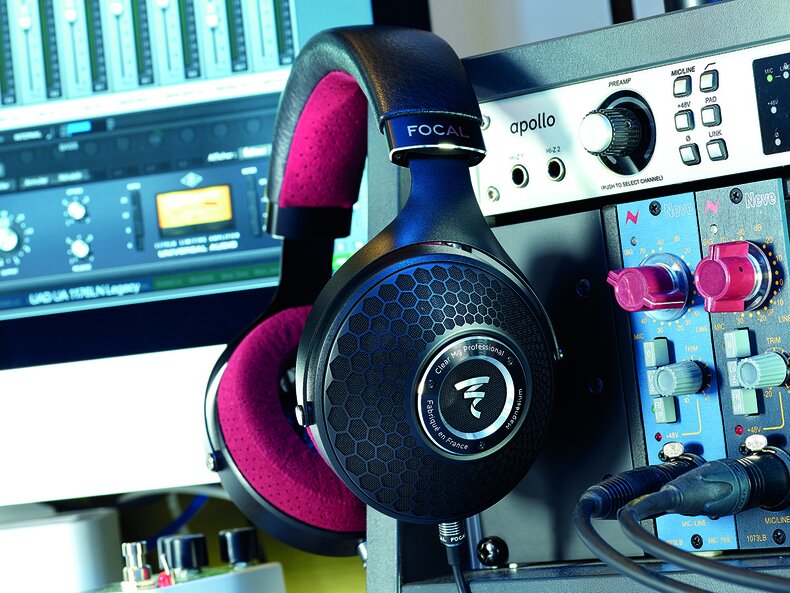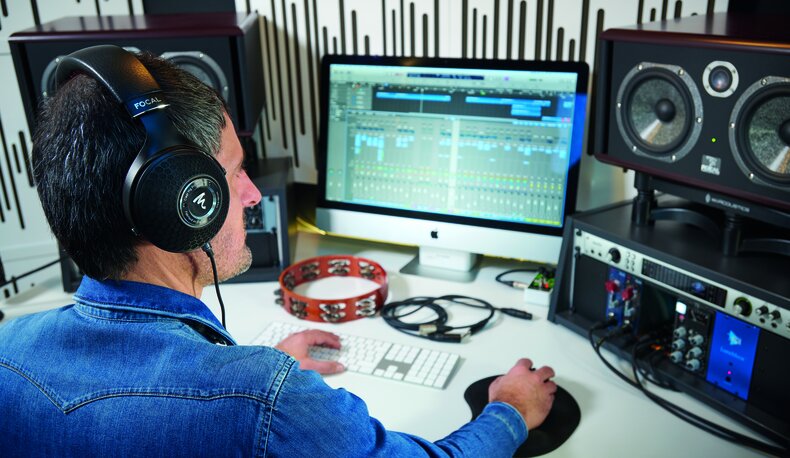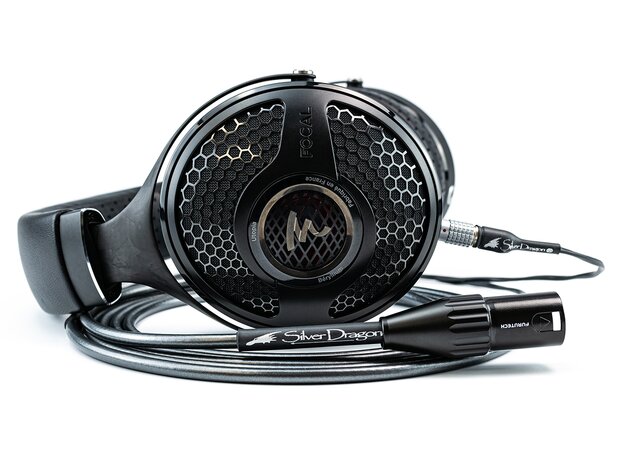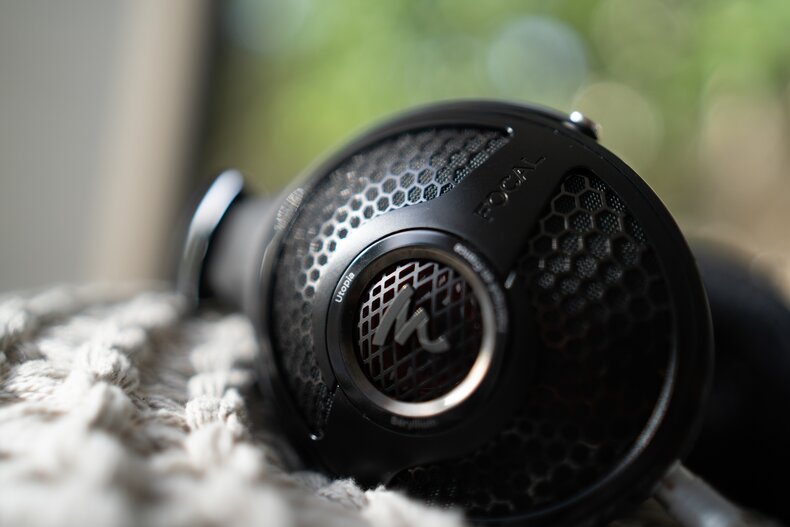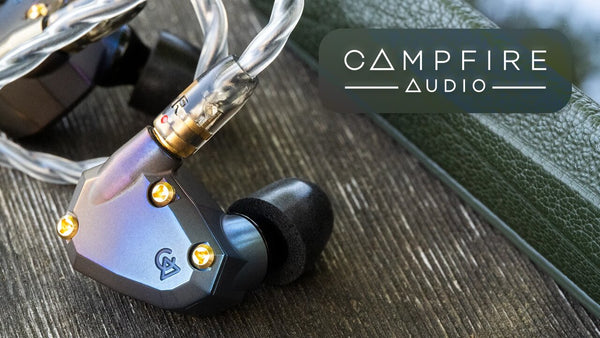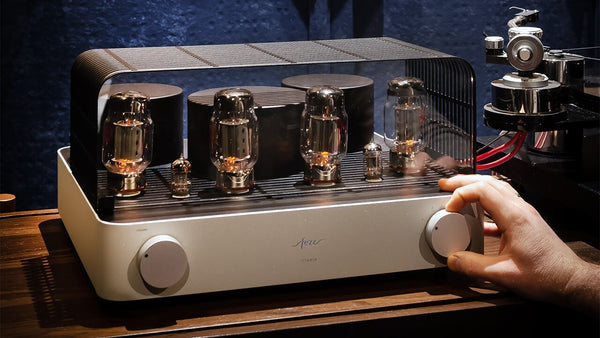Focal Headphones: The Insider's Guide for Audiophiles
Read Time: Approx. 18 min.

The Focal All-Inclusive Guide contains everything you need to know about Focal's world-renowned headphones, including reviews, comparisons, information about audio cables, and more
Durability, Comfort, and Style: Focal's Treasured High-End Headphones
Focal, a renowned French hi-fi audio equipment manufacturer, creates exceptional headphones that cater to the needs of audiophiles, audio professionals, and music enthusiasts alike. With a rich history of innovation and a commitment to deliver uncompromising sound quality, Focal is a leader in the high-end headphone market. From the flagship Utopia Headphones to the innovative Bathys Wireless Headphones, Focal's headphone lineup offers a wide range of options for those seeking a truly immersive listening experience.
For more than 40 years Focal has been making strides in the hi-fi equipment market, with its start in loudspeaker manufacturing. From there, Focal expanded to manufacture car speaker drivers and amplifiers, and near-field monitors for recording studios. Today, Focal focuses on more than just top-tier loudspeakers. By continuing to push the boundaries of acoustical engineering to the limits, Focal’s expertise with great-sounding materials and artful craftsmanship has inspired its product line of headphones. Focal's ultimate goal is exquisitely simple: to make every moment of listening to music a privilege.
Focal's Current Headphone Lineup
What happens when one of the world's leading loudspeaker companies sets out to build headphones that sound insanely close to your floor-standing counterparts?
A world-class soundstage that goes everywhere you go, that’s what. So, are Focal headphones any good?
Oh. Heck. Yes
Focal makes some of the world's best audiophile headphones with stellar sound, eye-catching designs, and amazing comfort. Their headphones benefit from the company's expertise in speaker driver design, with many models featuring custom-designed drivers that are fine-tuned to deliver a specific sound signature. With the debut of the Utopia, Focal earned its place in the top ranks of headphone manufacturers.
Since 2016, after the release of its first flagship open-back headphone model, the Utopia, the roster of headphones continues to grow similarly to the brand's worldwide audience of customers. Today, Focal’s continued innovation in dynamic driver technology in open or closed over-the-ear formats has produced plenty of options for audiophiles of all experience levels and budgets. Whether you prefer the open-back design of the Clear MG Headphones, which offer a spacious and natural soundstage, or the closed-back construction of the Celestee Headphones, which provides excellent isolation and a more intimate listening experience, Focal has a headphone model that will cater to your specific needs and preferences.
If you’re someone who has an appreciation for the finer things in life, then look no further. Focal celebrates your good taste and has much to offer.
Focal's Mid-Range Series
Focal Bathys Wireless Headphones
Designed for effortless audio bliss, anytime, anywhere— wired or wireless.
Sound Signature: Balanced, Dynamic
Dragon Cable Recommendation: As a wired listening option, Bronze Dragon Portable Headphone Cable will add musicality and warmth
The company's first leap into the ANC (Active Noise Cancellation) market, the Focal Bathys Wireless Headphones offer listeners high-quality sound in a portable setup. The Bathys retains Focal's signature aesthetic with a leather headband, honeycomb earcup pattern, and distinctive color scheme. It's a superb-sounding headphone and with the option to go wired or wireless, it's perfect for the audiophile who wants both the convenience of Bluetooth Audio and high-quality sound. Equipped with active noise cancellation, slip on the Bathys and leave the outside world behind while getting lost in your favorite tunes. What makes the Bathys standout however is its USB-DAC mode which can offer up to 24-bit/192 resolution, thanks to the integrated DAC and headphone amplifier.
The Bathys boasts Focal's audiophile sound with a great soundstage, tight and thumpy bass response, and clear, detailed mids and highs. It's a well-rounded headphone with enough energy to handle metal, EDM, pop, and hip-hop genres while being detailed enough to emphasize the acoustic guitar string plucking in folk music. At $799 you get a headphone that sounds great with every genre out there, and tons of features like ANC and app integration. It's hard to go wrong with the Focal Bathys.
Headphone Specs:
Speaker drivers: 15/8" (40mm) Aluminum-Magnesium ‘M’-shaped dome, made in France
Frequency response: 15Hz to 22kHz
Harmonic distortion rate: <0.2% @1kHz
Bluetooth technology: 5.1 Multipoint
Bluetooth range: >15m
Bluetooth frequency range: 2402MHz - 2480MHz
Audio codecs: SBC, AAC, aptX Adaptive, aptX
Type: Closed-back wireless headphones with active noise cancelling
Microphones: 8
Weight: 0.77lb (350g)
Carrying case: 97/16"x81/4"x23/4" (24x21x7cm)
Control application: Focal & Naim, iOS and Android compatible
Connections: Bluetooth® / Jack 3.5mm / USB-C
Battery life: 30 hours Bluetooth Noise Cancelling; 35 hours Jack mode; 42 hours USB DAC
Voice assistants: Google Assistant, Amazon Alexa
Focal Celestee Headphones
Pristine sound plus luxurious comfort = The perfect companion for extended listening sessions
Sound Signature: Warm side of Neutral
Dragon Cable Recommendation: Silver Dragon Premium Headphone Cable will add top-end resolution while enhancing detail retrieval
As Focal's entry-level closed-back headphone, the Celestee is a neutral-warm sounding headphone with a punchy, but not too overbearing bass. Leaning on the warm side in regard to the sound signature, the Celestee is a great match for genres like blues, folk, country, and more. With the Celestee, Focal retains its iconic styling that's seen in the Bathys, Stellia, and more. The navy blue and copper aesthetic lends a versatile yet timeless look and the circular pattern on the earcups is a familiar choice with Focal's headphones. As a dynamic driver headphone, the Celestee is pretty easy to drive, but as with any audiophile-grade headphones we recommend pairing it with a headphone amp, DAC (Digital-to-Analog Converter), or a DAP (Digital Audio Player. The Focal Celestee Headphone is one of the best sweet spots for a sharp-looking, great-sounding audiophile headphone that you just can't beat.
Headphone Specs :
Loudspeaker: 1.58" (40mm) aluminum-magnesium "M" shape dome
Impedance: 35 Ohms
Sensitivity: 105dB SPL / 1 mW @ 1 kHz
THD: 0.1 % @ 1 kHz / 100 dB SPL
Frequency response: 5Hz - 23kHz
Stock cable: 1 x 4 ft. (1.2m) OFC 24 AWG cable with 1/8" (3.5mm) unbalanced TRS Jack connector; 1 x Jack adapter, 1/8" (3.5mm) point socket 1/4" (6.35mm) point plug
Headphone type: Circum-aural, closed back
Weight: 15.1oz (430g)
Ideal for: Home or office music lover
Ear pads: Covered in semi-aniline leather
Yoke: Solid aluminum
Headband: Covered in semi-aniline leather
Focal Clear MG Headphones
Rediscover your favorite tracks with lifelike details and all-day wearability
Sound Signature: Warm side of Neutral with great detail retrieval
Dragon Cable Recommendation: The Silver Dragon Premium Headphone Cable will add top-end resolution while enhancing detail retrieval
The Focal Clear MG is a premium open-back headphone that represents Focal's expertise in audio design and innovation. Building upon the success of the original Clear, the Clear MG features a new M-shaped magnesium dome tweeter that improves the dynamics and balance of the sound. The Clear MG has an elegant look with a chestnut and mixed-metal design that's drop-dead gorgeous. The ergonomic headband molds to the user's head with a clamping force that's pleasingly snug without being overly tight.
The Clear MG delivers a sound that's lifelike, lively, and easy to love. The soundstage is wide and has a sense of openness to it. Overall, the Clear MG has sweeter highs and better bass definition than its predecessor the original Clear, with a little more depth to the sound. The Focal Clear MG is a good choice for the listener who enjoys a natural, clear, and slightly warm sound with lots of detail. This headphone works with many genres, and we especially like it with americana, classical, jazz, and acoustic music. It’s tried and true great sound and comfort, and we’d be doing you a disservice by not recommending it to anyone looking for one of the most premium headphones from Focal.
Headphone Specs:
Loudspeaker: 1.6" (40mm) magnesium "M" shape dome
Impedance: 55 Ohms
Sensitivity: 104dB SPL / 1mW @ 1kHz
THD: < 0.25% @ 1kHz / 100dB SPL
Frequency response: 5Hz - 28kHz
Stock cables:
3m balanced cable (XLR 4-pin); 1.2m unbalanced cable (1/8" TRS jack); 1/8" Jack to 1/4" stereo Jack adapter
Headphone type: Circum-aural, open back
Focal Clear Weight: 15.8oz (450g)
Ideal for: Home listener
Ear pads: 20mm memory foam cushions covered with a perforated microfiber fabric
Yoke: Solid aluminum
Headband: Perforated microfiber and leather
Focal Clear MG Professional (Pro) Headphones
Studio-grade clarity and a fatigue-free fit for the dedicated audio professionals
Sound Signature: Reference, Neutral and Transparent
Dragon Cable Recommendation: The Silver Dragon Premium Headphone Cable will deliver the most neutral, reference sound
The Focal Clear MG Professional (Pro) Headphones is a high-end open-back headphones designed specifically for professional audio applications, such as mixing, mastering, and critical listening. The Clear MG Pro incorporates Focal's latest magnesium dome driver technology to deliver a transparent, accurate, and detailed sound. Magnesium, known for its exceptional rigidity and lightness, enables the headphones to deliver unparalleled speed, precision, and dynamics. The headphone's open-back earcups allow for a natural and spacious soundstage that's essential for accurate sound reproduction in professional settings.
The sound quality of the Clear MG Pro is characterized by its detail retrieval, wide soundstage, and neutral tonal balance. It's got the ability to handle high SPLs (Sound Pressure Levels) without distortion and reproduce the nuances and subtleties of recordings. We find the Clear MG Pro sounds especially great with blues, folk, country, and rock genres. Comfort is crucial for audio professionals who spend long hours wearing headphones, and the Clear MG Pro excels in this area. It features plush, breathable microfiber earpads and a padded headband for a comfortable and secure fit during extended sessions. The Focal Clear MG Pro is a great investment for audio professionals who require the utmost accuracy and reliability in their monitoring equipment.
Headphone Specs:
Loudspeaker: 1.58" (40mm) aluminum/magnesium 'M'-shaped dome
Impedance: 55 Ohms
Sensitivity: 104dB SPL / 1mW @ 1kHz
THD: 0.25% @ 1kHz / 100dB SPL
Frequency response: 5Hz - 28kHz
Stock cables:
16.4ft (5m) unbalanced cable (1/4" [6.35mm] TRS jack)
3.9ft (1.2m) unbalanced cable (1/8" [3.5mm] TRS jack)
1/8" to 1/4" jack adapter
Headphone type: Circum-aural, open back
Weight: 15.9 oz (450.7g)
Sound signature: Warm side of neutral
Ideal for: Mastering engineer
Ear pads: 20mm memory foam cushions covered with a perforated microfiber fabric
Yoke: Solid aluminum
Headband: Leather and perforated microfiber
Focal's Reference Series
Focal Stellia Headphones
Exquisite sound and luxurious ft, crafted for the most discerning audiophile
Sound Signature: Detailed, Smooth and Resolute
Dragon Cable Recommendation: The Black Dragon Premium Headphone Cable will add musicality to the Stellia's sound
As one of Focal's flagship models, the Stellia is designed to cater to the most discerning audiophiles and music enthusiasts. The Stellia features a sleek and modern design, with a combination of high-quality materials such as full-grain leather, stainless steel, and aluminum. The headphone's earcups are hard to miss with a distinctive bronze, almost cognac color that draws the eye in. Focal continuously delivers a level of elegance that's present in each one of their headphones. In terms of comfort, the Stellia has plush, memory foam earpads and a padded full-grain leather headband that lends to its comfortable fit.
The Stellia uses Focal's proprietary 40mm Beryllium M-shaped dynamic driver, which lends a more analytical sound—but the Stellia is anything but clinical sounding! It’s detailed and energetic, with a smoother top end. It delivers an exceptionally detailed and nuanced sound, catering to those who live for critical listening. The Stellia incorporates a dampening system on the rear venting port of the driver that releases energy and helps produce a larger extension, resulting in a more controlled bass response. You'll experience more depth and height to the soundstage, resembling a concert hall's sound. It's a great choice for classical, jazz, and any other genre that demands a smooth, detailed, natural-sounding headphone. The Stellia's low impedance makes it easy to drive, so you can listen to them with a portable device like a DAP and enjoy your music comfortably at home. The Focal Stellia is a headphone that caters to those who seek the ultimate in sound quality and craftsmanship, making it a true statement piece in any audiophile's collection.

Featured: Focal Stellia Headphones with the Black Dragon Premium Headphone Cable
Headphone Specs :
Loudspeaker: 1.58" (40mm) aluminum-magnesium 'M'-shaped dome
Impedance: 35 Ohms
Sensitivity: 106dB SPL / 1mW @ 1kHz
THD: 0.1% @ 1kHz / 100dB SPL
Frequency response: 5Hz - 40kHz
Stock cables:
4ft (1.2m) OFC 24 AWG cable with 1/8" (3.5mm) TRS jack connector
10ft (3m) OFC 24 AWG cable with 4-pin XLR connector jack adapter, 1/8" (3.5mm) female – 1/4" (6.35mm) male
Headphone type: Circum-aural, closed back
Weight: 15.3 oz (434g)
Ideal for: Home or office/Detail-oriented listener
Ear pads: 20mm memory foam covered in full-grain leather
Yoke: Solid aluminum
Headband: Full-grain leather
Focal Utopia 2022 Headphones
Unrivaled sonic precision and comfort, engineered for the critical listener
Sound Signature: Dynamic, Detailed and Smooth
Dragon Cable Recommendation: The Silver Dragon Premium Headphone Cable will support detail retrieval in the mids and highs
The Focal Utopia 2022 Headphones are the second-generation top-of-the-line version of Focal's flagship open-back headphones, the Utopia. LIke its predecessor, the Utopia 2022 delivers astonishing clarity and detail.
The release of the OG Utopia in 2016 rocked the audiophile community and the release of the Utopia 2022 left us all speechless. Focal has taken the already exceptional performance of the previous Utopia and refined it to deliver an even more immersive and lifelike sound. The Utopia 2022 retains the excellent detail retrieval of the original, but with a sound that leans more smoky jazz club than a surgical suite—In other words, it's warmer than the more analytical original. Comfort remains a top priority in the Utopia 2022, with cushy lambskin leather earpads and a carbon fiber headband that helps keep the headphone's weight evenly distributed on the head.
While the driver design did not change, Focal made some structural changes that affected the sound. Most notable is the grille design, which lends itself to a more open sound, as well as the shape of the speaker grilles, which improves the linearity of the treble. The Utopia 2022 has an incredibly smooth treble with a sound that's fuller and rounder than the OG. The open-back design of the Utopia 2022 creates a vast and spacious soundstage, allowing you to experience music as if you were in the same room as the performers.
The Utopia 2022 has a versatile sound signature that’s going to complement a variety of genres, from blues and folk to rock and alternative. It effortlessly handles complex musical passages, maintaining clarity and instrument separation even during the most demanding tracks. As Focal's reference headphone, the Utopia 2022 comes with a premium price tag, reflecting its exceptional build quality and uncompromising sound.
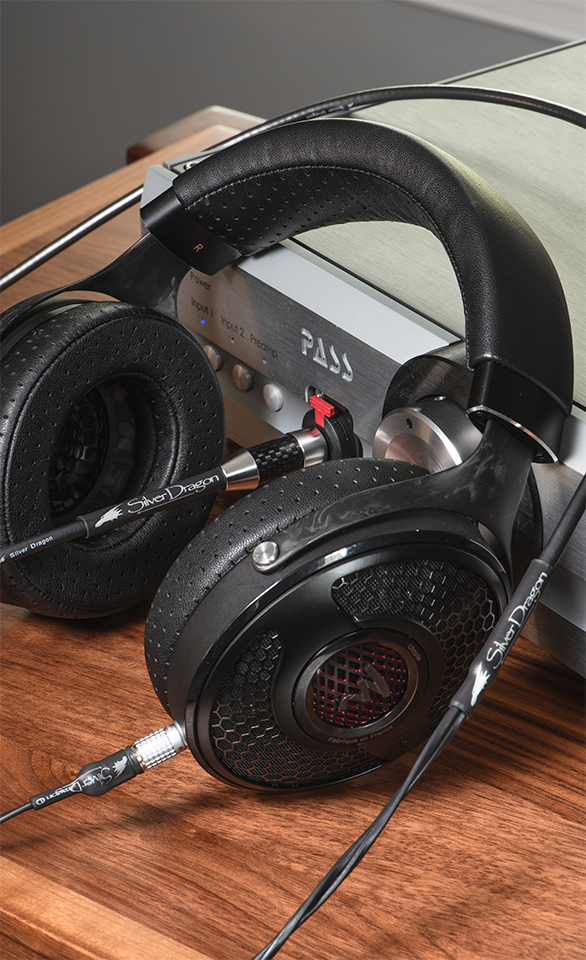
Headphone Specs
Featured: Focal Utopia 2022 Headphones with the Pass Labs HPA-1 Headphone Amplifier and Silver Dragon Premium Headphone Cable
Headphone Specs:
Loudspeaker: 1.58" (40mm) pure Beryllium “M” shape dome
Impedance: 80 Ohms
Sensitivity: 104dB SPL / 1mW @ 1kHz
THD: < 0.2% @ 1kHz / 100dB SPL
Frequency response: 5Hz - 50kHz
Stock cables:1.5m mini jack cable with 6.35mm jack adapter, 3m cable with XLR connector
Headphone type: Circum-aural, open back
Weight: 17.3 oz (490g)
Ideal for: Home/critical listener
Ear pads: 20mm-thick memory foam cushions covered in Pittards leather-microfiber material
Yoke: Carbon fiber
Headband: Pittards leather
Carrying case: 9.8x9.4x4.7" (25x24x12cm)
Legacy Headphones
Focal Elear Headphones (Discontinued 2019)
Utopia's "baby brother," the Elear has a clean and detailed sound that isn't overly analytical.
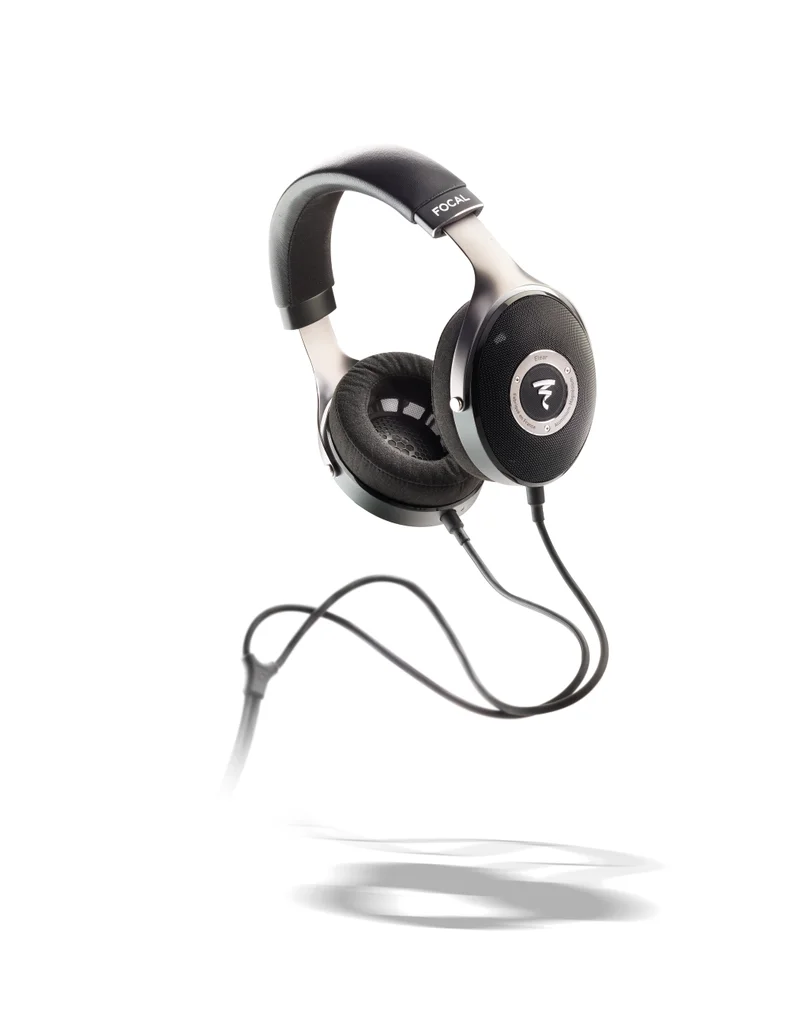
Headphone Specs :
Loudspeaker: 1.58" (40mm) aluminum-magnesium "M"-shaped dome
Impedance: 80 Ohms
Sensitivity: 104dB SPL / 1mW @ 1kHz
THD: < 0.3% @ 1kHz / 100dB SPL
Frequency response: 5Hz - 32kHz
Stock cable: 9.8ft (3m) OFC cable 1/4" [6.35mm] stereo jack; 2 x 1/8" [3.5mm] jack with self-locking system
Headphone type: Circum-aural, open back
Weight: 15.9 oz (450.7g)
Sound signature: Warm side of neutral
Ideal for: Home music lover
Ear pads: 20mm memory foam cushions covered in microfiber
Yoke: Solid aluminum
Headband: Covered in microfiber
Focal Elegia Headphones (Discontinued 2020)
The driver from the Elegia has been re-tuned and repurposed for the Focal Radiance and the Focal Celestee.

Focal Elegia Specs:
Loudspeaker: 1.58" (40mm) aluminum-magnesium "M"-shaped dome
Impedance: 35 Ohms
Sensitivity: 105 dB
THD: <0.1% @ 1 kHz / 100dB SPL
Frequency response: 5Hz - 23kHz
Stock cable: 3.94-ft (1.2m) asymmetric cable (0.14" - 3.5 mm TRS jack); 0.14" (3.5 mm) to 0.25" (6.35 mm) stereo jack adapter
Headphone type: Circum-aural, closed-back
Weight: 15.1 oz (428g)
Sound signature: Neutral, flat
Ideal for: Mastering engineers
Ear pads: 20mm memory foam cushions covered with microfiber fabric
Yoke: Solid aluminum
Headband: Covered in leather and perforated microfiber fabric
Which Focal Headphone is Right for Me?
There's no debate that Focal headphones are incredibly luxurious looking. The rich color scheme and minimalistic accents give them that je ne sais qoui that makes heads turn. But as the old saying goes 'looks aren't everything' and having a comfortable, versatile headphone is incredibly important. No one wants to buy a headphone that they can't wear for more than 30 minutes due to ear fatigue. And you certainly don't want a headphone with horrible sound bleed if you're within earshot of others. So, which Focal headphone is right for you?
Fit and Comfort
Focal uses the over-ear design for its current lineup of headphones, which tends to be more comfortable than on-ear designs and in-ear monitors (IEMs). An over-ear headphone has a large ear cup that fully encompasses the entire ear, resting comfortably around the ear. The ear cups on an on-ear headphone rest right on your ears, like a snug-fitting shoe without any extra wiggle room around the toes. You won't experience as much ear fatigue with an over-ear headphone, making it a great choice for extended listening sessions.
Sometimes, this over-the-ear design choice will come with a few drawbacks that could limit the flexibility and the availability of ergonomic scenarios best suited for the use of the headphones. Compared to “lighter” fit types, over-the-ear headphones can typically have a heavier and bulkier weight to consider in their inherent designs. After all, “large” usually implies “bulky” and “heavy” materials all working together to both surround the wearer’s ears and to create a solid sealing condition that isolates sound, effectively. However, Focal’s innovations have resolved almost all of the issues usually associated with the larger fit type. This makes Focal’s over-ear headphones more flexible for many more ergonomic scenarios, and even portable use.
By perfecting the over-the-ear design, Focal continues to focus on its core competency: presenting the best soundstage possible. It achieves this while pushing the limits of material sciences by manufacturing some of the lightest and most comfortable headphones on the market. After all, if producing a headphone with a superior soundstage is important, so should the ability to sustain the listening session comfortably without fatiguing the ears. Thanks to Focal’s engineering prowess and originality, this important ergonomic feature is on display in every over-ear headphone the company makes.
Ergonomic Scenarios
Focal offers a diverse range of headphones with both open-back and closed-back designs, so customers can select the style that best suits their preferences and ergonomic scenarios. An open-back headphone is designed with ear cups that are perforated and feature a grill-like pattern on the outside. In the case of Focal headphones, these tiny holes are ventilation airways that allow for free passage of air to vibrate around the driver. When air can move freely in and out of the ear cups in an open-back design, the sound tends to feel larger and wider. It's airier and your ears can breathe easier. The free passage of air also comes with the free passage of sound. As a result, open-back headphones tend to leak sound so those around you can hear your music almost as clearly as you can.

Featured: Focal Celestee Headphones with the Aurender A200 Caching Network Server and Pass Labs HPA-1 Headphone Amplifier
Closed-back headphones have solid ear cups that are not perforated so the drivers receive no ventilation and no air moves freely in and out of the ear cups. It's important to note that not ALL closed-back headphones have solid ear cups. Focal's closed-back headphones feature their signature honeycomb ear cup pattern, just with an enclosed backing. The sound in a closed-back headphone is contained by the ear cups so you get a more immersive, up-close, and personal sound. This can, however, cause listening fatigue after prolonged listening sessions because it isn't as breathable for your ears. Like everything, there are pros and cons to both headphone styles and the choice between the two comes down to personal preference and ergonomic scenario.
If your goal is to listen to music predominately in the privacy of your home, then open-back headphones should be on any home audio enthusiast’s radar. The Focal Clear Mg and Utopia 2022 open-back headphones will help you achieve your end-game the best at home or in the office, undisturbed.
On the other hand, if you’re searching for the best portable headphones to use when you're on the go, then look no further than Focal’s closed-back headphones. The Focal Bathys and Celestee closed-back headphones offer the best soundstage in a closed-back format.
For musicians, mixing/mastering engineers, or producers, the Clear Mg Professional open-back headphone is an excellent choice for projects, requiring an honest reference headphone with a more neutral and flatter frequency response.
For a more in-depth guide on everything there is to know about the advantages vs disadvantages between closed-back and open-back headphones in general, and the ergonomics scenarios best suited for each, read our ultimate Closed Back vs Open Back Guide to find out which style is the best for your ergonomic situation.
Listening at Home
Listening On the Go
For Pro Audio

Utopia 2020
Open
More Power Hungry
The open-back design provides a spacious soundstage for an incredible listening experience, but its sound leakage can disturb those within earshot. Great for critical listening sessions
490g
FAQs
1. What are the most popular Focal headphone models among audiophiles and professional users?
The most popular Focal headphone models include the Focal Utopia 2022 Headphones, Focal Stellia Headphones, Focal Celestee Headphones, and Focal Bathys Headphones
2. What makes Focal headphones unique compared to other high-end headphone brands?
Focal stands out among high-end headphone brands for their unique use of premium materials like Beryllium drivers and M-shaped Inverted Dome designs. They are also known for their focus on comfort, build quality, and distinctive modern aesthetics across both open and closed-back designs. Focal ensures high-quality craftsmanship through its 'Made in France' approach.
3. How do Focal's high-end headphones, like the Utopia and Stellia, compare to other flagship models from competing brands?
In terms of technical performance, the Focal Utopia and Stellia use premium materials like pure Beryllium drivers and innovative design features. They are known for delivering exceptional detail retrieval, speed, and dynamics. When compared to other flagship models like the Sennheiser HD 800S and Audeze LCD-4, the differences come down to sound signature. The Sennheiser HD 800 S is known for its exceptionally wide soundstage, while the Audeze LCD-4 is often praised for its powerful, lifelike bass response.
Ultimately, while the Utopia and Stellia are undoubtedly among the best headphones available from a technical standpoint, the choice between them and other flagship models will come down to personal preferences in sound signature, comfort, and design.
4. How do Focal's open-back and closed-back headphones differ in terms of sound and performance?
Focal's open-back headphones like the Utopia and Clear MG headphones have a wider, more spacious soundstage that delivers a more natural, airy sound. On the other hand, Focal's closed-back headphones like the Stellia have better noise isolation, an increased bass response, and a more intimate, focused soundstage.
5. Does Focal offer any wireless or noise-canceling headphones, or do they focus solely on wired models?
Focal primarily focuses on wired, high-end headphones, but they do offer one wireless headphone model, the Focal Bathys Wireless Headphones. Released in 2022, the Focal Bathys is Focal's first high-end wireless and noise-canceling headphone.
6. Are Focal headphones easy to drive, or do they require powerful amplifiers to perform at their best?
Focal headphones are relatively easy to drive and while a smartphone could drive them, you will not receive the optimum performance of the headphones without proper amplification. We always recommend that audiophile headphones be driven by a capable Digital Audio Player (DAP), headphone amplifier, or DAC/Amp combo. By pairing your focal headphones with a capable piece of audio gear, you'll receive the best possible playback with no degradation in sound quality.
7. How do Focal's driver technologies, such as their beryllium and aluminum-magnesium designs, impact the sound quality?
Focal's use of beryllium and aluminum-magnesium alloys in their headphone drivers significantly contributes to the exceptional sound quality of their products. Beryllium allows for fast, precise, and low-distortion sound reproduction, resulting in a transparent and resolving sound signature in Focal's flagship models. Aluminum-magnesium drivers offer a balance of stiffness, lightness, and damping properties, delivering a dynamic and well-controlled sound. Focal's unique M-shaped inverted dome driver design further optimizes frequency response and reduces distortion, complementing the properties of their advanced driver materials to create the exceptional sound performance that Focal headphones are known for.
8. How do Focal's headphones fare in terms of portability and storage, and do they come with protective cases?
Focal headphones vary in terms of portability and storage, depending on the specific model and design. The Focal Utopia, Setllia, and Clear come with a sturdy, padded hard-shell case that provides excellent protection during storage and travel. The Focal Celestee comes with a soft carrying case and is relatively easy to store and transport. The Focal Bathys Wireless Headphones offer even greater portability thanks to its Bluetooth connectivity and more compact design. The Bathys also comes with a protective case for easy storage and transportation.
9. Are Focal headphones comfortable to wear for extended periods, and how do they fare in terms of weight and clamping force?
Focal headphones are generally known for their comfort, even during extended listening sessions, thanks to their thoughtful design, use of high-quality materials, and attention to detail. While their high-end models may be slightly heavier due to their build quality, they are still relatively lightweight, and most users find them comfortable for long periods. Focal's ear pads and headbands are made with soft, breathable materials that minimize pressure points and discomfort, while the adjustability of their headphones allows users to find a secure and comfortable fit.
10.) Can Focal headphones be used for gaming or movie watching, or are they primarily designed for music listening?
While primarily designed for music listening, Focal headphones can also be used for gaming and movie watching, thanks to their excellent sound quality, comfort, and ability to create immersive experiences. Open-back models like the Utopia and Clear MG offer a wide, spacious soundstage that can enhance gaming and cinematic experiences, while closed-back models like the Stellia and Celestee provide better isolation and a more intimate sound. However, Focal headphones may lack some features found in dedicated gaming headsets or home theater systems, such as virtual surround sound or wireless connectivity.
Materials Matter: The Craftsmanship of Focal Headphones
When it comes to building something remarkable, the most experienced sound engineers understand that materials matter. When it comes to building something that sounds remarkable, not everyone fully agrees with the same principles. However, the materials used in loudspeakers, headphones and high-end audio cables, indeed, have a sound signature. It’s the best acoustical engineers, and listeners, who recognize the difference.
The material selected by a manufacturer for a headphone or speaker driver, for example, can determine that hairline difference in what users experience vs what they cannot hear, precisely. This includes the perception of micro details in the music with improved transients and frequencies felt by the body even though they are technically beyond the range of normal human hearing. With more than 40 years of building superior loudspeakers under its belt, Focal's engineering team knows what materials to use for the ultimate sound.
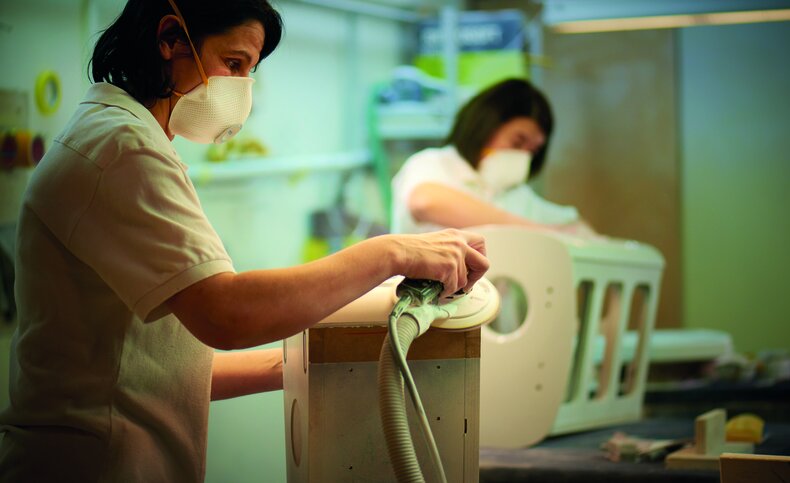
Focal Headphone Driver Technology
Focal places a heavy value on acoustic expertise and developing exclusive technologies, investing great time and resources in research and development. The company's commitment to innovation is evident in its use of cutting-edge materials and technologies, such as the Beryllium tweeter, which offers exceptional clarity and detail in the high-frequency range, and the M-shaped aluminum/magnesium dome, which provides a perfect balance between lightness and rigidity for optimal sound reproduction. This proprietary driver technology sets Focal's headphones apart from competitors, adding to their uniqueness and likability.
Focal's Aluminum-Magnesium Sound Signature: Warm Side of Neutral
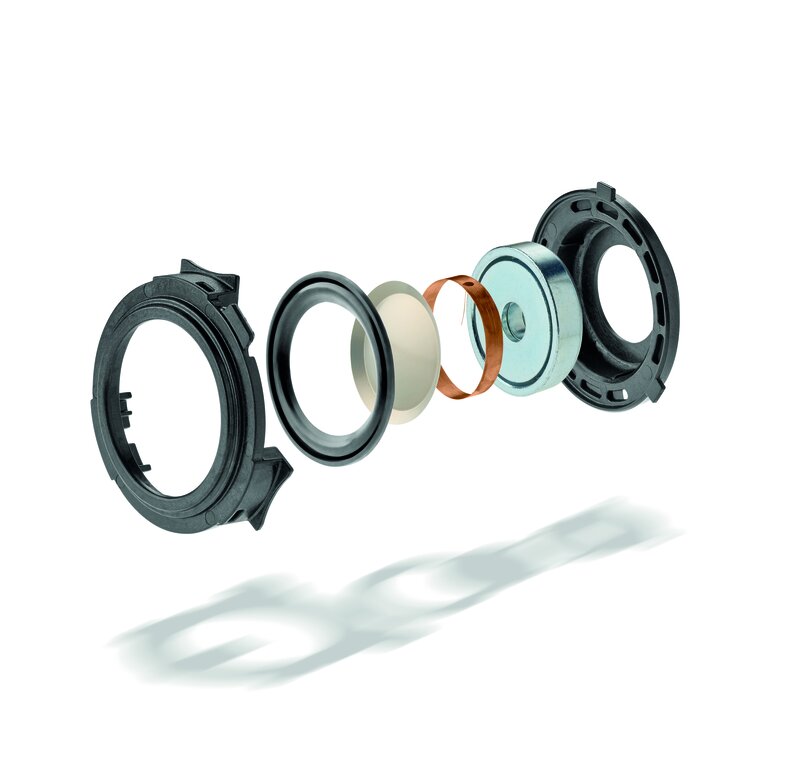
Aluminum-magnesium driver breakdown inside the Focal Clear MG Headphones
- Focal Celestee Headphones
- Focal Clear Headphones (Discontinued)
- Focal Clear Pro Headphones (Discontinued)
- Focal Radiance Headphones (Discontinued)
- Focal Elear Headphones (Discontinued)
- Focal Elegia Headphones (Discontinued)
Magnesium is the third most common metal used in structural applications, following behind iron and aluminum, according to Wikipedia. It’s commonly infused with other materials as an alloy for producing super-strong and lightweight materials. Like titanium, magnesium is also used in high-performance vehicles because of its extremely low density and weight. Magnesium is the least dense of all stable metals, and similar to titanium, it’s also very high on the strength-to-density ratio.
Magnesium’s stiffness-to-weight ratio is one of the reasons why the metal is used so much in high-performance automotive and even aerospace applications. When used to manufacture the bodywork or the engine components of high-performance automobiles, magnesium’s light-weight properties help vehicles gain a competitive advantage in a speed contest. Similarly, magnesium can help an aeronautical spacecraft gain a competitive advantage over the law of gravity and achieve lift-off.
For headphone transducer applications, these properties lay the groundwork for reproducing highly accurate sound waves with low distortion. Unlike titanium, magnesium tends to naturally provide (generally speaking) excellent resonance rejection, which explains why headphones made with it tend to sound more neutral. When used in headphones, magnesium is a fantastic material for applications where true, honest, more neutral, and less colored sound gives a competitive advantage to those in the field of audio engineering and the serious work of mastering studios.
Focal's aluminum-magnesium alloy provides an excellent balance of lightness, rigidity, and damping, enabling the drivers to deliver a fast, precise, and natural sound. The aluminum-magnesium drivers offer a slightly different sound signature compared to the Beryllium drivers, with a more neutral and balanced presentation that still maintains impressive detail retrieval and transient response.
Focal's Pure Beryllium Sound Signature: Analytical, Detailed, Resolute
The Focal Utopia and the Focal Stellia both utilize one of Focal's most well-known technologies, the M-shaped pure beryllium dome, which offers low mass, high rigidity, and high damping. The cross section of the diaphragm resembles the letter “M,” which is said to offer even higher rigidity for more precision and less distortion. By utilizing pure Beryllium in the driver's dome, Focal achieves unparalleled sound velocity, precision, and transparency. Focal's Beryllium driver headphones reproduce music with exceptional clarity, detail, and dynamics across the entire frequency range.
Beryllium is an extremely difficult and expensive metal to work with, so why use it? To represent sound waves more accurately, a dynamic driver or transducer’s diaphragm requires the right balance between weight, stiffness, and rigidity. These properties allow the driver’s diaphragm to vibrate back and forth like a piston, which produces the sound waves we hear. If the material of the diaphragm is not stiff enough, the diaphragm will be too flexible, and this flexibility will distort the sound waves it’s responsible for producing.
On the other hand, the diaphragm should be light enough to vibrate rapidly. If the diaphragm is too heavy, it can't move back and forth quickly enough to produce the frequencies as accurately as they naturally would be in the real world. So, the ideal material is one that’s extremely light, but also exceptionally rigid.
Unfortunately, most metals become increasingly flexible, and less rigid, during the manufacturing process. This is what makes beryllium and Focal’s manufacturing process unique. Beryllium has one of the highest strength-to-weight ratios of all known materials.
Focal's M-Shaped Inverted Dome
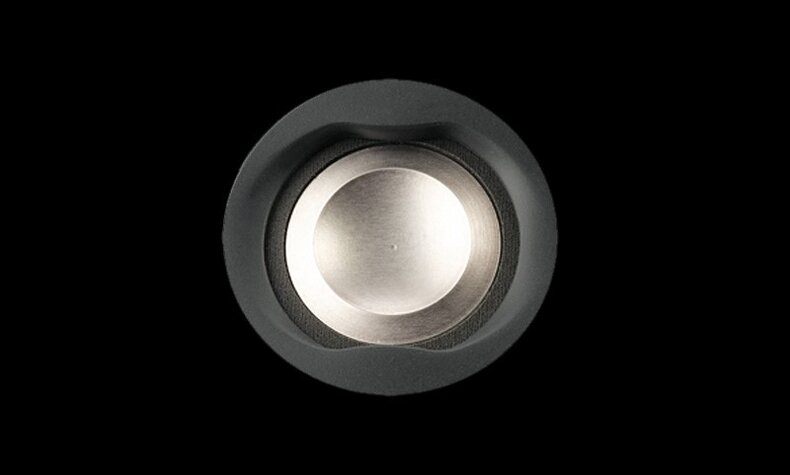
Focal's commitment to innovation expands beyond the driver materials themselves. They have also developed a unique driver suspension system called the 'M-shaped Inverted Dome.' This design involves suspending the driver in a way that allows it to move freely and accurately, reducing distortion and improving the overall sound quality. The M-Shaped Inverted Dome delivers a more linear frequency response and minimizes unwanted resonances.
Focal: Listen Beyond
Since its founding in 1979, Focal has won a laudable reputation with audiophiles worldwide. For more than 40 years, the company has designed and manufactured some of the best-sounding luxury loudspeakers in the world, and it's the company's commitment to innovation that led it into headphone design and manufacturing. To know Focal is to understand its beginnings and path to success, and it all starts in a little French city called Saint-Étienne.
The French city of Saint-Étienne, once known for its arms industry, was more recently a hub of coal mining, metals, and textiles. Coal mining disappeared in the 1970s, but the city retains its manufacturing air, as it is home to a number of engineering firms and other industries. It also holds a designation as a UNESCO Creative City of Design -- one of only a handful in Europe.
Focal, established in Saint-Étienne in 1979, beautifully embodies the spirit of creativity and innovation for which the city is known. Focal consistently pushes boundaries in sound technology. It's these technologies that have won the hearts (and ears) of audiophiles around the world. But while Focal has achieved international acclaim, it has also stayed true to its roots, retaining its "Made in France" ethic.

"Made in France" is a source of pride and importance to Focal, with the majority of the company's production carried out on home soil. A 188,000-square-foot production site in Saint-Étienne houses research and development as well as production lines for speaker drivers, loudspeakers, and headphones. Focal believes this is the best way to have total control over the design and quality control processes to ensure high-quality products. Focal products are the result of innovations and technologies exclusive to Focal, all developed by the company's engineers in France.
Focal is one of the only audio companies in the world to continually invest in research, with research into speaker driver acoustics being its core activity. In fact, Focal is one of the only loudspeaker brands to manufacture its own drivers.
Focal brings innovation and tradition together to enhance the performance of hi-fi sound and the beauty of music. It's a beauty that reveals itself through carefully crafted equipment that honors the artist's musical creation. Focal’s founder, Jacques Mahul, has always been committed to the faithful reproduction of music, just how the artist intended it to be.
Everyone at Focal abides by a common philosophy: French craftsmanship and industrialization, innovation, and tradition all come together to give audiophiles and music lovers access to the ultimate sound. Focal views its products as not only high-fidelity audio products but as lifestyle objects -- objects of everyday life. That’s why every tiny detail has been researched, designed, and tweaked. This makes them exceptional products capable of flawless performance with a distinguished style.
Who is Focal?
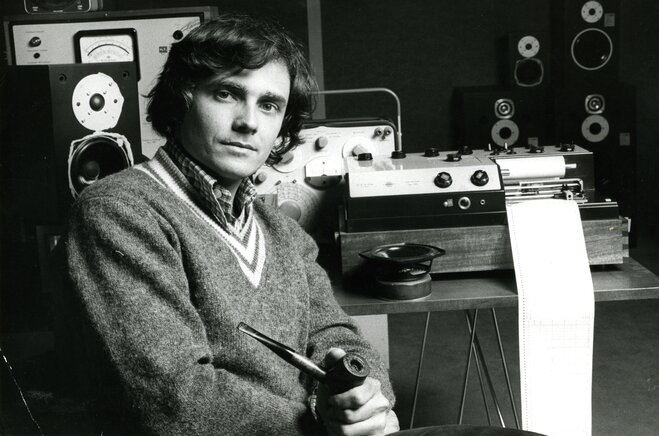
In late 1979, a young engineer and tech journalist named Jacques Mahul began producing speaker drivers at his father's precision mechanics company in Saint-Etienne. Soon, Mahul founded both Focal and JMlab. Focal commercialized speaker drivers for loudspeaker manufacturers, while JMlab specialized in high-fidelity loudspeakers.
JMlab's first commercial product, the DB13, was a bookshelf loudspeaker. With a double voice coil speaker driver, the DB13 revolutionized the world of small bookshelf loudspeakers, by producing volumes comparable to those of much larger models of loudspeakers, particularly in the bass frequencies. They were notable for their Polyglass and Polykevlar speaker cones.
In 1981, Focal debuted its "claim to fame" technology, the inverted dome tweeter. The inverted dome tweeter uses a voice coil that is affixed directly to a rigid dome. In a traditional tweeter, the voice coil is placed on the outside edge of the driver. By inverting the dome, Focal is able to place a voice coil on the driver itself, leading to greater efficiency and reducing moving mass.
In the late 1980s, Mahul decided to tap into his classic car enthusiast side. His childhood dream was to drive for hours on end while listening to music. The first car audio kits for speaker drivers were born, and the Focal Car Audio Department was created in 1989.
In 1995, Focal released the luxury Grande Utopia speaker to international acclaim. The Grande Utopia is considered one of the best hi-fi loudspeakers in the world. The goal at the time was to push the limits of acoustics and to serve as a reference for future generations of loudspeakers. What was only intended to be a technological challenge turned out to become a highly celebrated commercial product. Grande Utopia became a global reference in the world of acoustics. The latest iteration of the Grande Utopia, the Grande Utopia EM Evo, lives under the Utopia III Evo line of speakers. Other lines include the Sopra, Kanta, Aria 900, Chora, and Chorus 700.
In 2002, Focal entered the world of studio monitoring, giving birth to the Focal Professional department. The Focal Professional department offers a range of monitoring loudspeakers for recording studios.
Also that year, after two years of R&D, Focal unveiled its beryllium inverted dome tweeter. It was only the second time a tweeter had been made using beryllium, which offers low mass, high rigidity, and high damping. Beryllium is magnitudes more rigid than aluminum and titanium but without added mass. It is this rigidity that Focal says makes it the ideal tweeter dome material.
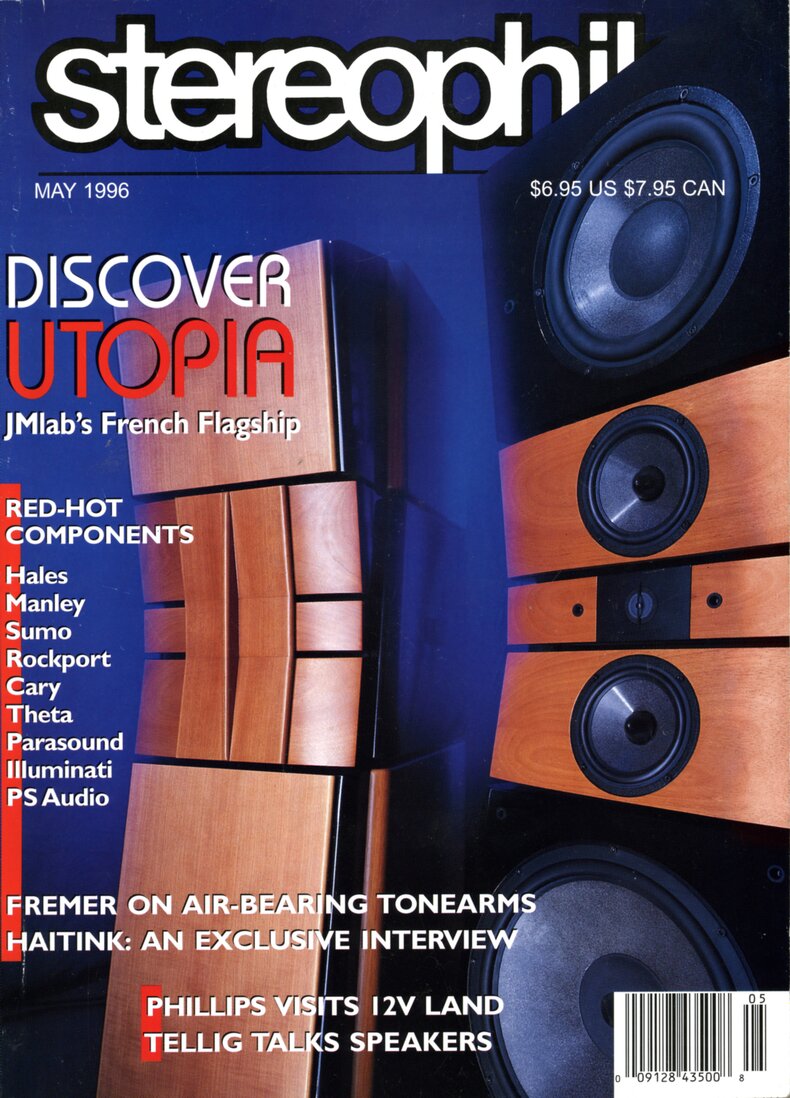
In 2003, Focal and JMlab two audio brands were incorporated under the name Focal-JMlab for home products, before being rebranded as just Focal in 2005 for all product sectors. In 2007, Focal bought a cabinet-making facility in Bourbon-Lancy, which was renamed Focal Ebenisterie Bourgogne in 2015. This is where a team of cabinet-makers use wood from a local sustainable wood supplier to hand-fabricate loudspeaker enclosures.
In 2011, Focal merged with Naim Audio Limited, a British company known for audio electronics. A holding company called VerVent Audio Group created in 2014 manages both brands, which remain independent with their own products.
2012 brought change to the company, with the release of Focal's first high-fidelity headphone the Spirit One. After four years in the headphone market, Focal released a revolutionary headphone in 2016: The Utopia Headphones. The world's smallest speakers are born in the Utopia open-back headphones, and the audiophile community has never been the same since. Over the course of the next eight years to the present day 2024, Focal released a wide range of headphones with ground-breaking technology, unique style, and impressive sound.
Today, Focal's products fall into five lines: Home, Headphones, Car, Professional, and Integration. Throughout its history, Focal has been recognized for its commitment to innovation, craftsmanship, and delivering exceptional audio experiences.
Related Videos
Best Headphone Cables for Focal Headphones
Best Closed-Back Audiophile Headphones of 2023
DACs Deciphered: The 4 Major Types Explained





